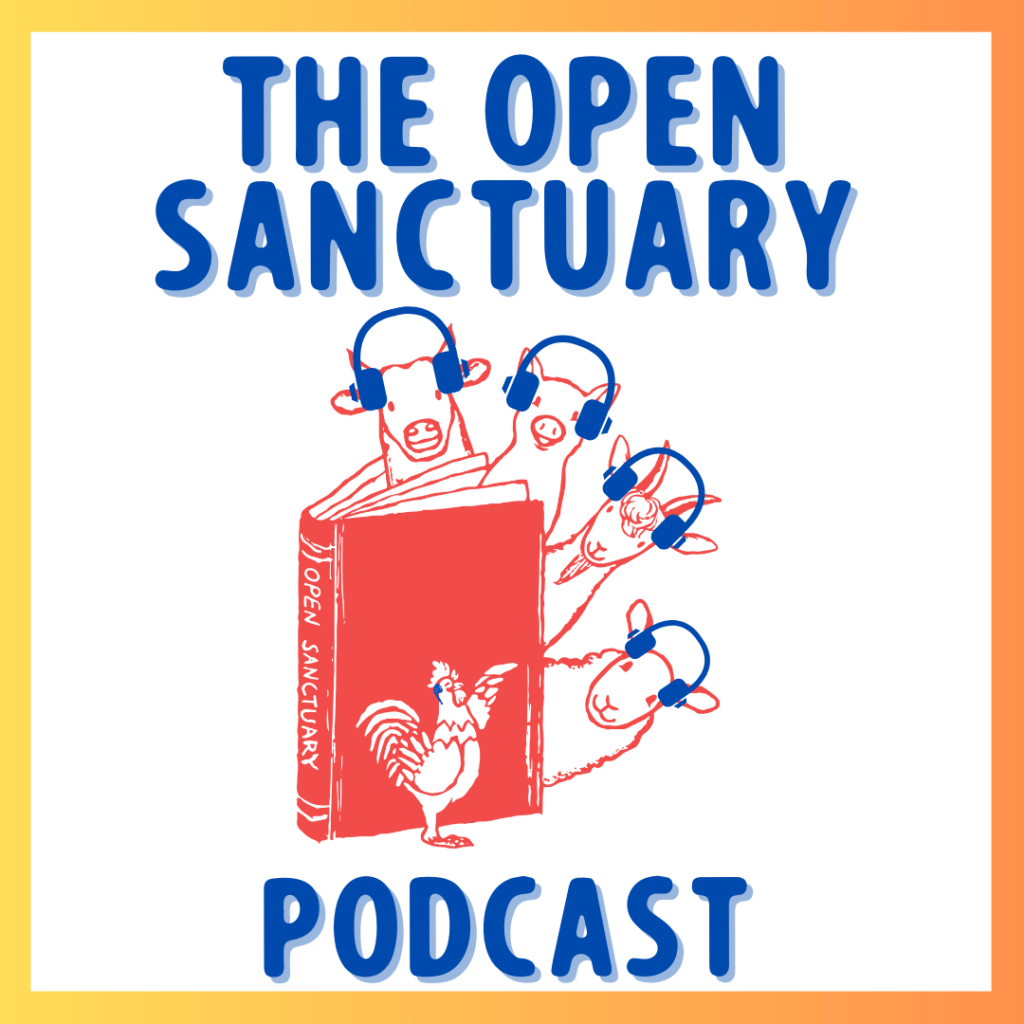

We Have A Podcast Episode On This Subject!
Want to learn about this topic in a different format? Check out our episode of The Open Sanctuary Podcast about common (and some uncommon!) staff roles
It’s A Team Effort
When just getting started, most animal sanctuaries tend to have a highly limited pool of personnel wearing a large number of hats to accomplish what the sanctuary and organization needs to get done in the course of a day. In fact, it’s quite common for founders to personally have a hand in nearly every role outlined in this resource to some extent. For many sanctuaries, this model of limited roles remains the same throughout the life of the organization due to budget or choice.
However, for sanctuaries who are supporting many residents and programs, this level of involvement can quickly become unsustainable for one or two individuals and a group of volunteers to maintain in the long run. If a sanctuary is looking to grow, it’s important for Founders to take a look at their organization’s needs and consider adding dedicated staff members to help their sanctuary operate efficiently and thrive well into the future.
The following is a brief description of staff positions that are commonly found at farmed animal sanctuariesAnimal sanctuaries that primarily care for rescued animals that were farmed by humans.. Individual sanctuaries may have their own interpretations and unique responsibilities for each position, and not every position will necessarily be relevant for certain organizations. Every sanctuary has its own mix of unique challenges and strengths that should be considered when thinking about what their staff development may look like. Many positions may also be valuable candidates for cross training in order to promote smooth operations in times of unexpected absences.
Founder
The FounderSomeone who starts an organization. A Founder may or may not also be the Executive Director of an organization. (or Co-Founders) of an animal sanctuary is the person or persons who dream up and launch the sanctuary. However, it’s important to note that the term “Founder” does not have a legal basis; a Founder is not necessarily the Executive DirectorThe individual formally in charge of final decision making at an organization, who sometimes works closely with the organization’s Board of Directors. Sometimes a Founder is an Executive Director, especially early in a nonprofit’s growth stages. (though on most occasions they are both when they first get started), nor are they necessarily a voting board member. They are just the one who got the whole thing going! Those who found animal sanctuaries must be mindful that, if they are making decisions for the organization, they should be prepared to eventually depart from a decision-making role.
Executive Director/ President/ Chief Executive Officer
The Executive Director (or President or Chief Executive Officer) is the senior manager at the top of the decision-making process for a sanctuary. In most cases, the founder of a sanctuary is also the Executive Director in the formative years of the organization. The Executive Director works closely both with the board and everyone in the sanctuary’s leadership to make decisions that will help the organization most effectively carry out its mission and grow sustainably. Quite often, the Executive Director may also be the public face of the sanctuary if the organization’s staff is limited.
The decision to take up the label “Executive Director”, “President”, or “Chief Executive Officer” is not necessarily grounded in functional difference, but one of perception. Many nonprofitA non-governmental organization whose primary purpose is something other than selling goods or services. organizations prefer the term “Executive Director”, due to the other terms having more of a for-profit business connotation and less of a “warm” perception. As nonprofitsNon-governmental organizations whose primary purpose is something other than selling goods or services. grow in scope and organizational complexity, it’s become more typical for many to give the top spot the name “President” or “CEO” in order to create a perception of more formal organization or clarity as to who makes final decisions. Ultimately it’s up to individual sanctuaries to decide what title they’d like to adopt!
Caregiver
Caregivers are a vital component of many animal sanctuaries. These staff members are dedicated to the daily care of residents, ranging from daily feeding, habitat cleaning, health checkups and documentation for residents, providing basic healthcare and medication regimens as necessary, coordinating veterinary care, and advocating for residents who are in need of help to decision-makers at the organization. Sanctuaries may divide caregiving responsibilities by species, resident populations, or by caregiver skill level. For many sanctuaries, a full-time caregiver is one of the first major hires that they’ll make in order for a founder to have more time to handle other organizational needs and get a breather from the daily realities of sanctuary operation. Oftentimes, a sanctuary will hire at least one caregiver to live at or very near the sanctuary in order to be on-call for overnight safety. Because they typically work with the residents much more often than other staff members, sanctuary management should highly consider deferring to the expertise of care staff when it comes to major life and health decisions for residents.
Caregivers tend to experience many emotional challenges due to the inherent closeness of their position to the residents without much relief or time to process their emotions, especially during end-of-life situations or medical emergencies. It’s important that a sanctuary be aware of the very real challenges of compassion fatigue and burnout. Sanctuary management should make sure staff are informed of signs that a caregiverSomeone who provides daily care, specifically for animal residents at an animal sanctuary, shelter, or rescue. (or any staff member) may be suffering from these devastating, but common conditions, so that steps can be taken to help them recover. In addition, check out our resource on how to best support a sanctuary care staff here.
Shelter Manager
Different sanctuaries have different leadership configurations, but a common role at larger sanctuaries is the Shelter Manager. This person is typically in charge of all operations related to the care of the residents and has a strong decision-making role in ensuring that all are cared for to the best extent possible. The Shelter Manager may directly oversee all caregivers, as well as provide guidance for how the habitats and facilities are developed and maintained. A Shelter Manager must be highly knowledgeable in resident care, sanctuary operations, and a strong leader who can delegate effectively in times of stress.
Facilities Manager
A facilities manager (or in the case of smaller sanctuaries, a dedicated caretaker for the property) can ensure that the physical environment of the sanctuary is always well-tended to, in good repair, and aesthetically pleasing. It can be highly valuable to have someone whose sole responsibility is to ensure that the habitats and pasture are safe for residents, that all of the essential functions of the sanctuary are operating as efficiently as possible, and that nothing will go unnoticed that could potentially harmThe infliction of mental, emotional, and/or physical pain, suffering, or loss. Harm can occur intentionally or unintentionally and directly or indirectly. Someone can intentionally cause direct harm (e.g., punitively cutting a sheep's skin while shearing them) or unintentionally cause direct harm (e.g., your hand slips while shearing a sheep, causing an accidental wound on their skin). Likewise, someone can intentionally cause indirect harm (e.g., selling socks made from a sanctuary resident's wool and encouraging folks who purchase them to buy more products made from the wool of farmed sheep) or unintentionally cause indirect harm (e.g., selling socks made from a sanctuary resident's wool, which inadvertently perpetuates the idea that it is ok to commodify sheep for their wool). anyone at the sanctuary. This role can be vitally important to protect residents from fire risk or foreign body ingestion, and protect humans by staying on top of OSHA requirements and advocating for safety in all aspects of the property.
Volunteer Manager
If a sanctuary relies heavily upon the public in order to assist with daily tasks and events, having a dedicated Volunteer Manager can be highly important for identifying needs that can be fulfilled by public volunteers, ensuring that communications to volunteers are carried out clearly and effectively, and making sure that volunteer opportunities are presented and filled promptly and in an organized fashion. A Volunteer Manager can also maintain all critical community relationships necessary for successful ongoing volunteer programs, and they may also regularly communicate the sanctuary’s gratitude to the volunteer base, which is an effective way to ensure that invaluable help keeps signing up for shifts!
Education/Outreach Director
If education is a strong component to a sanctuary’s missionThe stated goals and activities of an organization. An animal sanctuary’s mission is commonly focused on objectives such as animal rescue and public advocacy., either in the form of tours or other educational events for the public, having a dedicated Education or Outreach Director can be a great addition to the organization. This role can focus full-time on creating and refining opportunities to help visitors connect with the residents and help foster more compassion for farmed animals. They can also help create and manage a sanctuary’s tour program, ensuring that an appropriate and effective message is being shared with the public at all times, and target potential audiences that may be receptive to educational programming. At some sanctuaries, the Outreach Director is also tasked with attending events outside of the sanctuary to help spread the message of the sanctuary’s mission and goings on to the community. Oftentimes, an Education or Outreach Director will work with outside organizations who share a similar mission in order to spread a sanctuary’s message to larger communities.
Marketing/ Public Relations Director
As a sanctuary grows into prominence and organizational maturity, hiring someone dedicated to maintaining relationships with the public and fostering positive community perception becomes incredibly valuable. A Marketing or Public Relations Director can help guide sanctuary communications to achieve a consistent voice that the public can come to identify with the sanctuary, target and create more opportunities for sanctuary visibility in the larger community, craft and handle press releases as big things happen at the organization, and be a critical support role in the unfortunate but (not uncommon) event of a sanctuary dealing with a public relations challenge.
Development Director
A Development Director is primarily tasked with fundraising and helping the sanctuary find sustainable revenue streams, as well as maintaining relationships with major donors and seeking grants to help supplement the organization’s operating budget. The Development Director typically works closely with all departments to determine the sanctuary’s financial needs and calculate a realistic fundraising goal to achieve each year, developing an effective mix of fundraising tactics and opportunities to focus resources on. Dedicated Development Directors are indispensable assets to help sanctuaries work towards sustainability well into the future. It is highly recommended that sanctuaries prioritize the hiring of a Development Director in order to maximize the chances of maintaining an annual operating budget that can withstand unexpected costs without the need to conduct emergency fundraising to remain solvent.
Accountant
Sanctuaries should all have access to an accountant, either on-call for the occasional financial question (especially if they are a legally registered nonprofit organization) or on staff if the organization has a complex financial picture. All 501(c)(3) registered nonprofits in the United States must submit Form 990 each year in order to maintain their nonprofit status, and doing this critical task without a formal background in accounting could potentially introduce risk to an organization.
Legal Advisor
All sanctuaries should have access to an attorney or someone qualified to review any legal questions that may come up in their operation. There are many decisions and scenarios that could potentially introduce legal risk to an organization, especially in the case of the public interacting with the residents. Having someone available to review documents (such as adoption contracts or liability waivers), policies, and protect a sanctuary from risk is highly important, especially as an organization grows.
Human Resources Director
If a sanctuary achieves a large enough staff, it may be prudent to hire a dedicated Human Resources Director in order to maintain positive, clear communications between staff members and management. This role can be a valuable support to ensure that everyone working at the sanctuary feels heard and understood, especially in times of organizational growth or stress.
Board Member
A good board is a critical component of a nonprofit organization, and this is especially true of animal sanctuaries. Sanctuary board members may come from a diverse range of backgrounds and occupations, and may indeed have little direct experience with sanctuary management. The most important thing a board can provide is impartial guidance as to the best way for an Executive Director to lead a sanctuary in carrying out its mission. At first, it’s not unusual for a sanctuary’s board to consist of friends and colleagues of the founder, or even the founder themself, but ultimately a board’s most critical functions and roles are hindered if the board is merely an extension of the founder or Executive Director’s opinions.








